
What is On-Page SEO?
On-Page SEO is a search engine optimization technique to help search engine bots understand, what your page is all about. By tweaking and optimizing features like Meta title, meta description, Heading tags, and Internal links, you could increase the chances of achieving a higher rank in search engines.
When it comes to optimizing a website or a blog post, there are two main factors at play:
- On-page optimization
- Off-page optimization
Off-page optimization deals with optimization of signals that are outside your website. For example Backlinks.
Today’s article will focus on on-page optimization, and I will be sharing lots of good on-page SEO techniques you should implement while working on optimizing your blog posts.
Best On-page SEO tools:
There are a few popular On-page SEO tools out there that will help you analyze the top 10 results for your query.
Some of these tools will also compare your page with the top pages and give you data backed up recommendations for improving the on-page SEO.
Here is the list of tools:
- SurferSEO
- SEMRush SEO writing assistant
- Frase (AI-based tool)
These tools provide on-page SEO recommendations for your existing content or for the new content you are writing. They are easy to use and could be used by you or your team of writers.
This is something I have been extensively using and that’s how you have found my website in Google search.
Now, let’s not confuse on-page SEO-optimization with onsite SEO-optimization.
- On-site SEO refers to the optimization of the entire website with things like Sitemap and setting permalink structures.
- On-page SEO optimizes content for a target keyword within a single blog post. This includes using proper headings, proper keyword placement, ensuring content quality, and paying attention to many other factors.
Why Do You Need On-Page SEO Optimization?
Now, when some SEO’s hear the term “SEO-optimized articles”, they think this is some kind of bad practice.
But it’s not only bad, but it is necessary.
Here is some food for thought:
- Why are you not ranking on the first page of search results?
Well, there are likely a lot of reasons, but if you aren’t paying attention to SEO, then that’s probably the biggest reason.
So when we do SEO-optimization of a post, we follow a certain set of proven methods to rank it higher on a search engine.
Now, Google doesn’t only consider on-page SEO score when ranking an article. It also takes into account many other factors like social media signals (shares, likes, tweets, follows, etc.), backlinks, domain authority, and many other off-page metrics.
Our goal with on-page SEO is to optimize an article in a natural, but smart way, so that search engines can easily pick out the target keyword and bring our website targeted visitors.
Before you read more, I assume you know about keyword research and how to find keywords to target. If not, check out these posts:
- Keyword Research for SEO – The Ultimate Guide For Beginners
- SEMRUSH Review: A SEM Tool to Research Competitors’ Keywords
- Best Keyword Research Tools For SEO: 2025 Edition
A lot has changed over the past several years. While off-page SEO is important, on-page SEO should not be neglected.
In particular, the golden rule still applies:
- Content is king.
One thing that I would recommend you start doing is adding in videos to your blog posts.
Videos will not only increase the amount of media on your posts, it will also make your posts that much more informative and content-rich.
You’ll see an example of what I’m talking about in a minute.
11 On-Page SEO Techniques For Better Ranking in 2025
Before I share some specific tricks, here are a few non-technical things that you can incorporate today:
- Improve the user experience.
- Make sure your website is responsive and broken links are kept to a minimum.
- Ensure that readers coming from search engines spend a lot of time on your site. If they hit the back button quickly, your ranking will drop quickly too.
- Make sure your site is maintaining a standard of professionalism.
- Use proper copywriting techniques to make people stick around.
- Create good content.
- Try using benefit-driven sub-headings to be more engaging.
- Don’t write fluff.
- Seek feedback and improve.
So now I’ll share with you the 10 on-page optimization factors you should keep in mind while optimizing your blog posts.
1. Meta Title
This is the most important on-page SEO factor. The reason for this is because the more attractive and optimized your title is, the more people will click. And in general, the more clicks your post gets, the higher it will rank.
You should try to use the targeted keyword or Keyword phrase toward the beginning of the title (H1) tag, but if that’s not possible, make sure it’s at least in the title.
You should also not repeat the same keyword more than once in the title tag because you think it will help the article rank higher. It won’t. It could actually hurt your ranking. Don’t do it.
And keep the title length to under 65 characters.
For more on how to write a great title, check out:
- 7 Free Blog headline Generators & Analyzers for More Traffic
- How To Write Catchy Headlines And Blog Titles Your Readers Can’t Resist
2. Post Permalink Structure
Making sure your URL is displayed correctly is an important on-page metric. Again, you should use your target keyword in the URL, and avoid using special characters, symbols, brackets, commas, etc. within the actual URL.
Use dashes to differentiate the strings in your URL structure. These are called “pretty” permalinks and are supported by most web browsers.
Example of a good permalink:
- https://www.domain.com/post-title-separated-with-dashes
For more on permalinks, check out:
3. Use Proper Heading Tags
You should use heading tags to highlight various headings, sub-headings, and important points.
In WordPress, the title tag is set at H1. You don’t really need to use any more H1 tags anywhere in the article. One is enough. For section breaks, stick to H2 and H3 tags.
Also, don’t use too many H2 or H3 tags as Google’s algorithms won’t like that.
Learn: Heading Tags SEO: Tips for using heading tags correctly
Here is what Google’s Matt Cutts has to say about repeating heading tags:
If you are using WordPress, you can click on content structure at the top to see if you are using proper heading tags or not.

4. Use Table of content
As it has become important to write a detailed article, and some time the articles are as long as 5000+ words.
By using a table of content, you could help users to navigate your long article better, but it also helps you to earn jump links in Google search.
I have explained about this earlier in this video
5. Keyword Density
In 2025, maintaining keyword density is debatable. What you should focus on is the mix of keyword varitaions. But if you wish to maintain, You should keep the keyword density around 1.5% percent with a mix of LSI keywords.
My recommendation is to use semantically related words to help the search engines understand more about your content.
Use your main keyword once in the first paragraph and again in the last paragraph. And use it in the content where it makes sense.
Check out:
6. Meta Tags
You should add a unique and relevant meta description with each blog post.
Again, you should use your use targeted keyword in the meta description. I have seen a lot of SEO’s advocate that meta description is not a ranking factor which I believe is not correct. I have seen a great co-relation with optimized meta descriptions and ranking.
While search engines pick up on keywords, it’s also important for users to click on the post. You need to write user-friendly meta descriptions that make sense and are related to your post.
In regards to meta keywords, Google has made it clear that they don’t care about them. But some search engines, like Bing, may still care a little.
7. Images with Alt text + Meaningful name
Image optimization does help a lot in driving traffic from image searches.
Keywords in the “image title” and the “alt text” help to make your blog post more focused and targeted.
Make sure you give a meaningful name to image before uploading. And, after adding an image to a WordPress page or an article, add alt text.

Another advantage of using images are:
Images create engagement.
And the more engaged a user is, the more likely they’ll stick around, thus increasing your overall rank.
But there’s one very important point to note.
Large images will slow down your site, and having a slow loading site will decrease your Google rank. So it’s very important to:
For more about how to speed up your site, check out:
7. Word Count Per Post
Blog posts that don’t have a lot of words typically don’t perform well on search engines. That’s because they’re usually seen as being “less informative”.
Of course, there are exceptions, but for a general information-based blog, creating posts with at least 1300 words is the new standard.
However, there is a way by which you can find the idle word limit for an article, and this video helps you understand that:
It’s always better to be well-researched and overly informative than it is to not provide enough information. This is especially true if you’re targeting highly competitive keywords.
Here is how the find idle word length for perfect On-page SEO:
- Head over to SEMRush
- Create an account, click on SEO content template (Left sidebar)

Enter your target Keyword, and location for which you want to optimize.

Now, on the next page, you will find the idle word limit for your target keyword, like this:

It also shows other data like “Semantically related words” and “Readability” of top 10 search results.
This is the best way to find the word limit for an article that you trying to rank for.
Suggestion: Analyze other posts for your target keyword and see how many words they have.
You can use the below mentioned On-page SEO tools to analyze the top 10 search results for your target keyword.
While there is no “official” count, longer posts tend to rank better because there is typically more information there. For instance, this post is over 2,800 words.
For more on writing informative content, check out:
8. Add Schema
This is underutilized On page SEO technique that you can use to outrank your competitors. By adding Schema (Structured data), you help the search engine understand more about your content.
For example, having your phone number and email address in the footer is definitely valuable for your visitors but the search engine might not make sense of it.
By utilizing schema, you giving context to its relevance.
A simple example is the star ratings (review) you see in the search engine. See example below:

Schema can be used for blog articles as well as on a business website.
For WordPress, you can use WP Review Pro or Schema Pro plugin which let you quickly add the following schema types:

If you are not using WordPress, then use this tool to generate Schema markup and add it manually on pages of your website.
FAQ schema is one of the newest schema types, and it could help you improve your content ranking by a great extent.
I have made this video to help you understand everything about implementing FAQ schema type for improving On page SEO:
9. Internal Linking
Interlinking of blog posts will help your blog readers spend more time on your blog, and it will also help pass page rank to other pages of your site.
When interlinking, try to use a keyword as the anchor text, but be very careful not to overdo it.
Internal links that are relevant to the original post show search engines that you are providing extra information beyond what is being displayed in the content.
A good combination of anchor text + internal link, will help on passing link juice from one page to another.
There are a few popular internal link plugins available for WordPress.
Here at ShoutMeLoud, I use the Linkwhisper plugin for managing internal links.
Watch this video to understand how to configure this:
But make sure your interlinking is relevant and necessary.
Read:
- How To Improve Your WordPress Site Internal Link Structure [SEO Tutorial]
- 3 Best Solutions For Interlinking Blog Posts In WordPress
10. External Linking
Apart from linking to your own blog posts, it is a great idea to link out to external websites as well. Again, only do this if the information on the external website is relevant to the information in your post.
While linking out to external websites, you should link to trusted websites only. And if you have doubts about the authority or popularity of a website, you can use a nofollow tag to avoid passing your link juice to potentially bad sites.
You should use dofollow links for trusted websites and nofollow links for those that are less trustworthy.
But somewhere authoritative like Wikipedia, or CNN, or a major player in your niche, will not only be trustworthy, they’ll likely have relevant content that your readers will love.
This will make your site appear more credible.
Read: How Outbound links improve SEO
11. Write Engaging Content
You should write engaging content. Period.
If you’re trying to get by with low-quality content and “trick” search engines, you will surely fail.
Your post should be a complete manual for that keyword. You should learn how to engage your audience in a way that works for them. Try asking your readers questions and answering them. Understand what they want to read, and then write that.
If you are unable to write engaging content, people will not spend much time on your blog, your bounce rate will increase, and your rankings will plummet.
For more on creating great content, check out:
- How To Write TOP Content If You’re Not A Native English Speaker
- How To Use Creative Writing Elements For A Better Blog
- 5 Little Known Secrets of Writing Compelling Blog Posts
On-Page Optimization Checklist for 2025:
Here is a checklist you can use to make sure you are doing everything possible to rank higher in search engines.
Keyword placement Tips:
- Keyword in the title.
- Keyword in the permalink.
- Keyword in the first 100 words.
- Keyword in the image alt tag.
- Use LSI keywords in the body (use SEMRush to find related keywords).
- Use LSI keyword in H2 or H3.
On-Page SEO Factors 2025:
- Remove all stop words from permalink.
- Add multimedia (video, slides, infographics).
- Find idle word limit using the On-Page SEO tools mentioned above.
- Optimize images before uploading (compress and resize).
- Optimize page load speed.
- Create a meta title of fewer than 65 characters.
- Create a meta description of fewer than 158 characters. (This is a new meta description limit for 2025)
- Internal links to related articles.
- Outbound links to relevant high-quality sites.
- Use Breadcrumbs
- Use FAQ Schema
Other things not mentioned here:
- Make sure to add an image for Facebook, Twitter, etc.
- Make sure to have social sharing buttons either at the end or floating on the site of your post.
- Have related posts after each post to lower down the bounce rate.
Things not to do:
- Don’t put more than one H1 tag (your post title is H1).
- Don’t repeat the same H2 and H3 tags. Read about heading tags for SEO.
- Don’t stuff keywords.
Things to focus on:
- Use your keyword in the post title.
- Use long-tail keywords.
- Content length: It should be based on research. Analyze the word length of the top 10 results for your query and create content with the same or more words than the top 3 results average.
- At the end of the blog post, ask users to take action.
How To Do Proper On-Page SEO of any Articles
So these are 10 tips that will help make your on-page SEO much better and more likely to rank on search engines.
But it’s important to remember:
You can’t trick the search engine for long.
Recommended read: How To Write SEO Friendly Content
The things that rank the highest are the things that are the most informative, the most engaging, and the most useful.
So strive to create content that readers love, and search engines will love you too.
On-Page SEO FAQs
On-page or in-page SEO means fine-tuning single web pages for one or more keywords to make them more visible and show up higher in search engine results. It includes optimizing content, including relevant meta tags, and other on-page SEO elements to make the page search engine friendly.
To do On-Page SEO analysis:
– Begin by researching relevant keywords to your content.
– Optimize page titles, meta descriptions, and content using these keywords.
– Focus on content quality, relevance, and user experience.
– Ensure proper URL structures, internal linking, and mobile responsiveness.
– Use On-Page SEO optimization tools like Frase, SurferSEO, or Semrush SEO writing assistant to analyze and enhance on-page elements effectively.
An example of on-page content is a webpage or blog post well optimized for search engines. This content has relevant keywords, structured headings, well-formatted meta tags, data tables, engaging content, internal links, and media elements like images or videos, all geared towards attracting organic traffic.
What are your tips for optimizing blog posts? Share them with me in the comments below!
Like this guide? Don’t forget to share it!


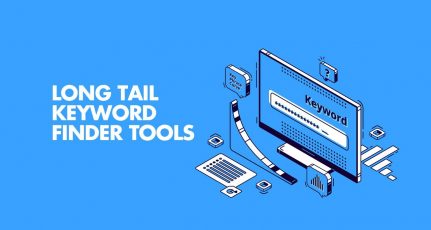
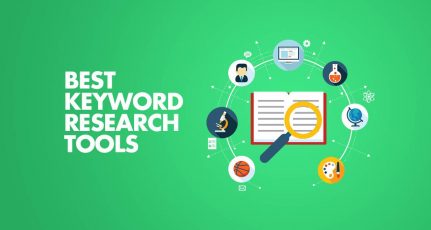
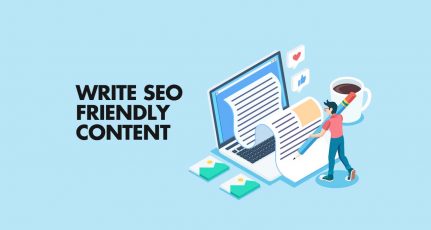
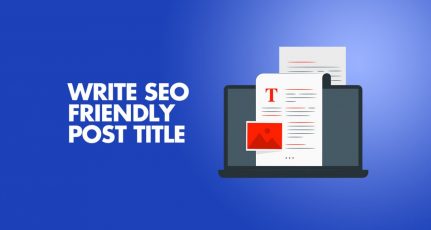
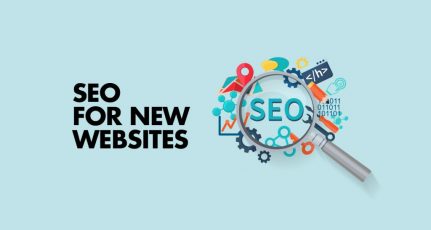
Hi ANIL AGARWAL,
You summarized on page SEO techniques very smartly but my concern is about keyword density. You mentioned that KW should not be more than 1.5% but when readers read blog post and then comment on it then you don’t think your keyword density will increase?
my keyword density is more than 3% what is your opinion.
@Umesh
I believe 3% is on the higher side.
Hi Anil,
That’s a great content. I just think about “Don’t increase Keyword density by more than 1.25%”. Because i have a movie film at Turkey. I use movie’s title 3 times in content and use 100 – 150 words at that content. Which strategy is useful for me.
Hi Anil,
Awesome article! thank you for sharing However, I prefer to use an h2 and h3 tag more then one time, Is it harmful from SEO point of view?
Very informative guide and updated techniques. Glad to know Google is actually moving towards a more personalized approach for users. This makes sense given that when you find a website, you would actually want to find a relevant information on it, and not content blocks full of keywords. Thank you!
Hi.
Thank’s for sharing.
Is 700 words minimum is am must? At this time i only write about 480 words each article.
About the title, should be keywords and add two phrase words or only keywords in title?
Thank’s.
Awesome post Anil. Thanks first for sharing. As my opinion I think the primary keyword keep in title, meta description, search engine friendly URL are the most important. BTW what about the external linking structure? Should we keep it no-follow so that link juice not pass?
Great article Anil! I was especially intrigued by LSI keywords. Do you think that they will increase or decrease in importance as the time goes by?
Great on page optimization. You content is easy to follow and high in readability. Thank you for sharing Anil especially in a platform like shoutmeloud.
Generally, it is a good practice to use small size image, however, if someone wants to add a big image he/she can easily compress the image using image compression tools. It will significantly improve the loading speed of a site.
Yes, it is very much important to have your main keyword in the first paragraph and not use h1 tag more than once on a single page. Make sure you have quality content and targeted keywords added in a manner that it makes sense. over optimization also harms.
Thank you for your nice article .I have advertisement website and the people add ads which are sometimes having short content and i cannot adjust these ads according to seo content requirements but i’m using yoaset seo plugin and i adjust the content according to this plugin and this plugin gives me an orange color which means that seo is ok …. my question is :: Is that enough or not ?
Great content as always!
I am confused that is there any exact number of characters that google shows properly without making it ‘…’ at last. Dont know to optimize a title when i have too much keywords.
I am using On Page SEO plugin by YOAST for my blog. Most of the times it shows a “Green” or an “Orange” indicator after I set my Focus keyword. My question is that do i need to anything more except using using Yoast for onpage SEO?
Thanks Harsh To share This information.
I am using SEO plugin “Yoast.” There is one thing focus keyword. I have asked you many questions this one is my most Imp. Please tell me is it compulsory to use? Can I leave it empty putting meta descriptions. Please reply me soon.
Hi Anil,
I found your post very helpful.
Could you please let me know how could I increase the DA of my Gaming website, I am fresher in SEO.
Which one make more impact to page rank.
On Page SEO or Off Page SEO?
Both…!
is the h3 and h4 is important for on page seo and also can u plz explain what is relevant term mean ?
These are great points but always remember to do an SEO audit to ensure your site is the best it can be before you plough ahead with a SEO strategy to get more traffic.
There is no point rushing ahead if your site needs a lot of work beforehand!
Hi, One Page SEO techniques mentioned above are really worth complimenting, thanks for sharing valuable info. I have a query here, If I am targeting a particular keyword, Do i need to write the same keyword through the post / article ie ; Title, Permalink, Header Tags, Meta Tags etc and in the post body, Paragraph or Do i need to use relevant keywords in the Paragraphs ( Posts Body ) to the Prime Keyword what i am targeting ?
Hey Harsh,
I am writing a post about On-Page SEO.
I have a question, Can “Select a Focus Keyword” be an On-Page SEO technique?
Thanks in advance.
@Istiak
Yes, you can. Without Focus keyword (Target keyword), what’s the point of On page SEO? 😉
That’s right. Most of the posts about On-Page SEO missed this point.
Thanks for the reply.
please tell me what is the exact length of article..? as it is mentioned in article that it should be 700 words… but my friends said that it should be > 300 < 500 words.. thanks..